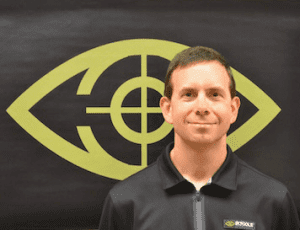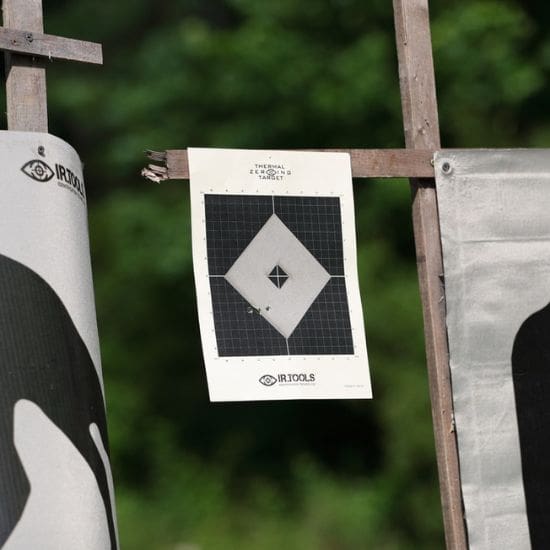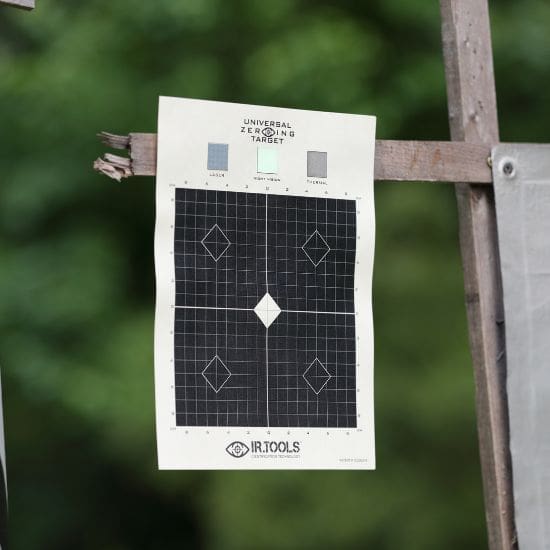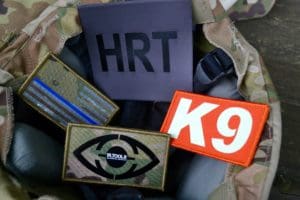Reach Your Shooting Goals with Convergent or Parallel Zeroing
When it comes to zeroing your weapon, there are 2 verified methods to choose from: convergent zeroing or parallel zeroing.
These techniques may sound complicated, but after learning each method, you will find either one can help you reach your shooting goals.
The choice between convergent and parallel zeroing depends on your specific requirements. In addition, you will need to assess several other factors:
- shooting scenario
- expected engagement distances
- environmental conditions
In convergent zeroing the laser sight and the point of impact are aligned to meet at a designated distance. This means the laser dot and the bullet impact coincide at the exact same spot for that specific distance.
In parallel zeroing the laser sight and the point of impact are riding alongside each other for the distance of the shot. Unlike the convergent, the parallel laser and impact never meet. They stay parallel to each other for the entire shot.
So which method should you use?
The following tips will guide you in choosing the convergent or parallel method.
Remember, zeroing is a process of trial, error, and adjustment.
So take your time, make the necessary changes and you will arrive at your desired accuracy.
Understand The Bullet Trajectory
Convergent
The bullet trajectory and the laser dot converge or meet at the desired zero. Suppose you perform a convergent zero at 50m. At 50m, the bullet and the laser impact the target precisely at the same location. But on the other hand, the bullet trajectory will deviate from the laser dot at longer or shorter distances. So, you need to keep this in mind if the weapon is zeroed at 50m, yet you find yourself shooting at 100m or 25m. There will be a different point of impact.
Parallel
The bullet trajectory and the laser dot stay on track and move parallel to each other over the distance of the shot. They will never cross paths.
Expected Engagement Distance
Convergent
Typically used for shorter distances. In this case, you want the laser dot to precisely indicate the point of impact at a specific distance. The accuracy of hitting a target beyond the zeroed distance is not dependable.
Parallel
Typically, more suitable for longer distances. Here you ensure that the laser dot remains in alignment with the bullet trajectory until impact. In the end, this gives you less to think about when shooting at further distances.
Shooting Scenarios
Convergent
Convergent is recommended for tactical operation and law enforcement engagement distances under 25-50m. If you are preparing for close quarter contacts and quick target acquisition at a short-range a convergent zero will give you maximum benefit.
Parallel
Advantageous for situations that require engagement at varying distances, beyond 100m such as long-range shooting or hunting in diverse environments.
Environmental Conditions to Consider
While there are flexible rules in a convergent or parallel zeroing session; wind, humidity, altitude, and the terrain also play a significant part in the accuracy of your zeroing. In some cases, the effect will be minimal, yet it is important to fine-tune and adjust when necessary.
Strong winds can cause the bullet to drift off the target, so it is critical to adjust your aim for the speed and direction of the wind. The dense air that accompanies humidity may also affect your bullet trajectory and cause it to drift off the target.
On the flip side of dense air is low air density in higher altitudes. A bullet path in high-dense air versus low-density is different.
In addition to winds, and air density, the terrain without a doubt will impact your bullet point of impact. Gravity will act differently on uneven ground such as a slope or an incline.
All environmental conditions must be considered and compensated for regardless of your zeroing method. By doing some preplanning you will snuff out any potential errors and unsuccessful shots. Saving you time and money!
Ready-Made Zeroing Targets Hits Your Mark
Say goodbye to makeshift targets and save precious time and money.
Ready-made zeroing targets are incredibly helpful when it comes to zeroing your weapons. The convenience of the tailored design for different optics streamlines your zeroing efforts for spot-on hits.
IR.Tools offer 2 dedicated targets for your advanced optics. Either target can accelerate your convergent or parallel zeroing accuracy.
Thermal Zeroing Target
The Upright Thermal Zeroing Target is dedicated to Thermal scopes only. This 8.5 x 11 target built on Rite in the Rain paper™ resists all forms of moisture. Travels easy! Throw it in your rucksack for a quick confirm zero. The 2cm diamond shape target aim point turns out a deep sharp contrast. No blooming! Shoot outdoors or indoors with provided portable heater.
Universal Zeroing Target
Universal Zeroing Target satisfies the zeroing for your Laser, Night Vision, and Thermal sights. This target is also designed on Rite in the Rain paper for exceptional durability. There are 3 – 2 cm peel and stick pasters. One paster for each weapon sight. The target unique design guides you to a zero fast at 25m. Laser and Night Vision pasters are shot outdoors or indoors. Thermal paster is for outdoors only.
Just remember to keep an eye on your distance, shooting scenarios, and environmental factors.
Take your time, carefully consider each of these conditions, and make the necessary adjustments to your shots.
With a little patience and attention to detail, you’ll be well-prepared to achieve an accurate zero for your weapon.
Happy hits!

Since 2006, Tom has been the driving force behind IR.Tools, dedicated to delivering top-notch infrared solutions to the military, law enforcement, and sportsmen communities.
What began with a single infrared patch has blossomed into a comprehensive store featuring hundreds of IFF patches, vehicle IFF, an extensive suite of thermal training targets, and tools for drone pilots.
Beyond his innovative products, Tom is passionate about educating users on infrared technology and showcasing how advancements in IR can enhance their operations.
Tom holds an MS in Mechanical Engineering from the University of Maryland and an MBA from Regents University.




